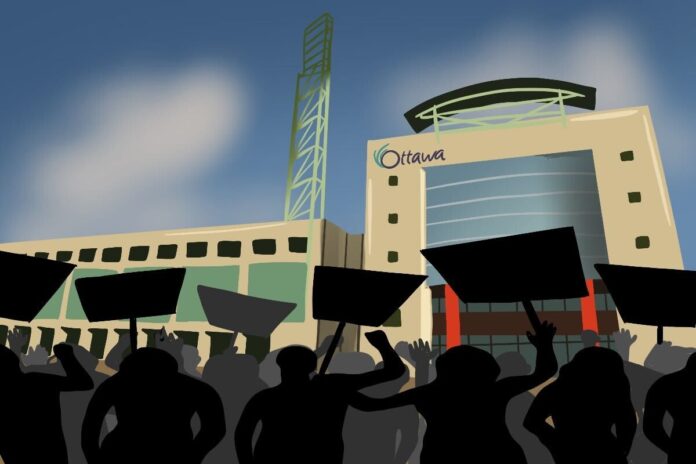
Ottawa’s city council has moved forward with exploring the feasibility of a “bubble bylaw.”
This exploration will assess whether a bylaw should be implemented to create safer zones around places of worship, schools and other critical community locations. The proposed bubble bylaw would establish buffer zones protect these spaces from potentially disruptive or dangerous protests.
The initiative follows in the footsteps of Vaughan, Ont., where city officials approved a bylaw prohibiting protests within 100 metres of what they label “vulnerable social infrastructure,” such as child-care centres, hospitals and schools.
Ottawa’s bylaw would aim to balance protesters’ right to demonstrate peacefully with the need to protect community members from possible harassment.
During a recent media availability session, Mayor Mark Sutcliffe noted the city has seen a dramatic increase in demonstrations over the last few years, with some taking place outside schools, retirement centres and religious institutions.
A 100-metre no-protest zone around these sensitive sites could deter disruptive behaviour and minimize the risk of conflict, while still respecting the right to free speech more appropriate areas, Sutcliffe stated.
Sutcliffe remarked he has heard from “many” residents that feel uncomfortable, threatened and scared by the demonstrations.
“We want to make sure every citizen in Ottawa feels safe, but we also want to protect the right for people to protest and demonstrate,” he said.
However, some citizens fear the bubble bylaw would infringe on free speech.
Chris Dixon, an activist and associate professor at Carleton University, said the restrictions could ultimately suppress legitimate expression and restrict public discourse by cutting down on where protests can occur. He added the bylaw may be overly broad or applied unevenly, possibly targeting specific groups.
“There are a lot of people in power who are uncomfortable with being directly confronted about issues that matter,” Dixon said. “It’s the people who are in those positions who get to determine what true freedom of expression is.”
Dixon said he believes there are still some positive takeaways.
“We’ll see people continue to take action and figure out ways to support each other — even when facing suppression.”
Rae Steeves, a 19-year-old University of Ottawa student, climate activist and protest organizer from Halifax, said the bylaw is concerning.
“It’s a lazy approach to handling the rise of hate crimes and speech in Ottawa. Hate speech is a crime, and should be taken seriously no matter where in the city it happens,” Steeves said.
In February, Ottawa Police reported it had noticed a steady uptick in hate crimes from 2022 to 2023.
“Regulating protests as a whole, and not hate crimes specifically, paints all protesters with the same brush and inadvertently excuses hate speech,” Steeves said.
Steeves said a protest ban near schools would limit the number of student walk-outs, which are an effective way to get messages across to school boards.
“I am especially concerned about that aspect,” Steeves said. “If we want to tackle the rise in hate crimes in this city, we must look at the root causes of it, and uplift the people from marginalized communities that are standing up for themselves and each other.”
Featured graphic by Alisha Velji/The Charlatan.





